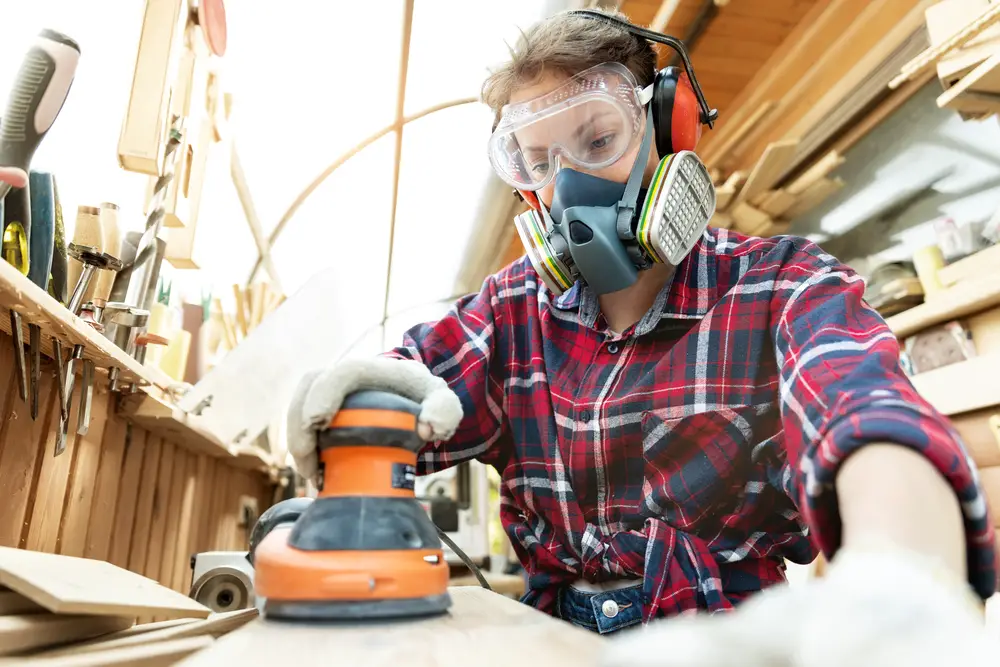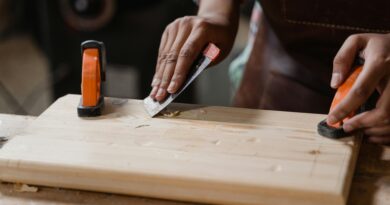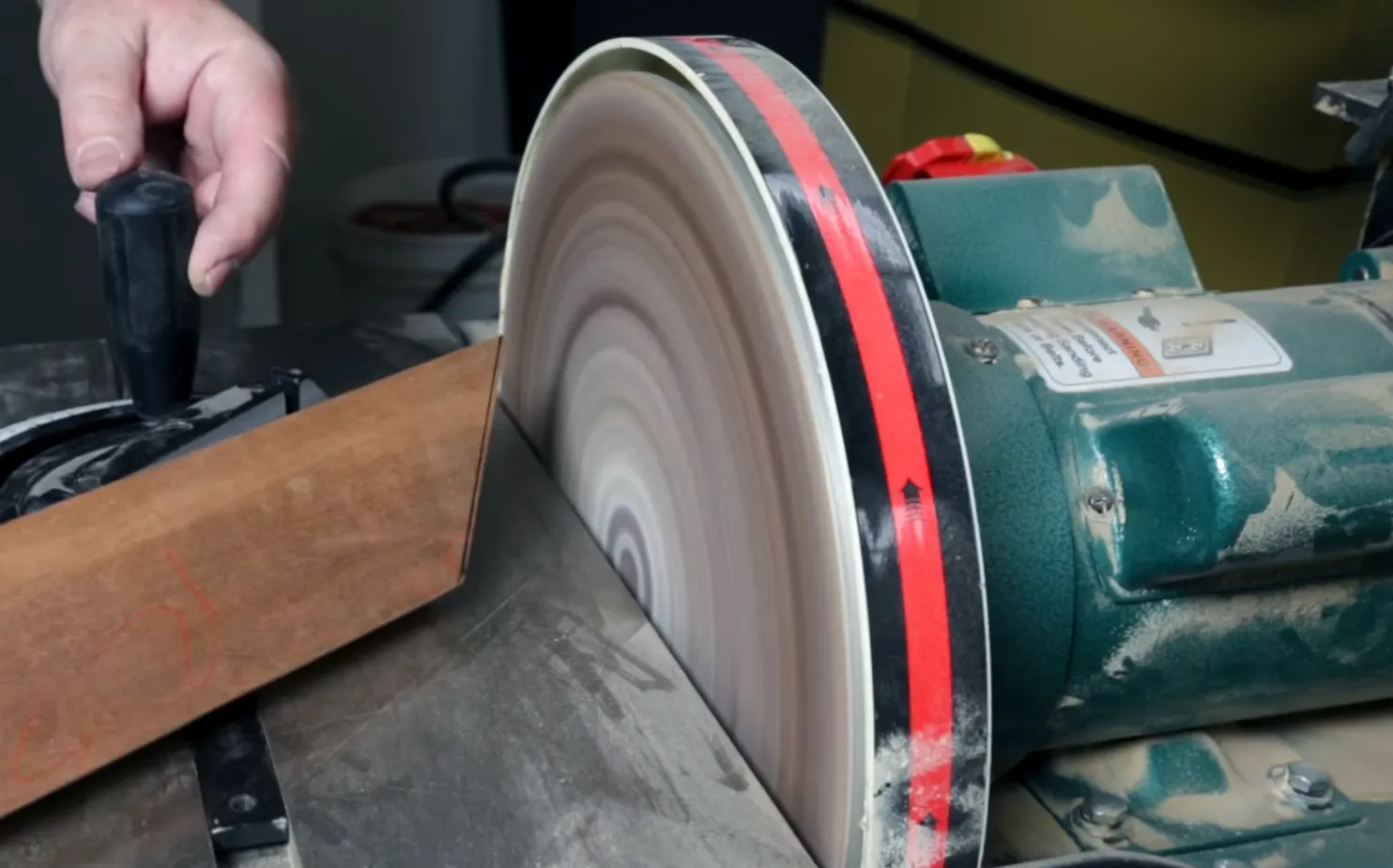Orbital Sander vs Da Sander [Key Differences Explained]
Are you planning to give your old furniture a new life or just want to smoothen some surfaces? Then you must be thinking about which type of sander would be best for the job. Confused between Orbital Sander and Da Sander? Well, worry not because we are here to clear all your doubts and help you make an informed decision.
Key Takeaways
- Orbital Sanders are better for finishing work on smaller surfaces.
- DA Sanders are more powerful and efficient in removing paint, rust or corrosion on metal surfaces.
- Orbital Sanders use circular sanding pads while DA Sanders use round foam pads.
- DA Sanders have adjustable speed options, making them more versatile than Orbital Sanders.
- The choice between the two depends on the surface area, material type, and desired finish.
So before making a purchase, take a look at our key points and decide which sander will suit your needs.
What is an orbital sander?
An orbital sander is a tool that spins sandpaper in small circles to remove material from a surface. Imagine a tiny tornado of sandpaper, gently erasing away roughness and imperfections. It’s like having a personal assistant for your DIY projects – it makes everything smoother and more polished.
Think of an orbital sander as the Swiss army knife of sanding tools. It’s versatile, easy to use, and can handle a variety of tasks with ease. Whether you’re refinishing furniture or smoothing out drywall, an orbital sander can get the job done quickly and efficiently.
Here are some key features that make an orbital sander stand out:
- It has a circular sanding pad that moves in random orbits.
- The pad rotates at high speeds, but doesn’t spin in one direction.
- The motion helps prevent swirl marks on the surface being sanded.
In short, if you want to achieve smooth results without putting in too much elbow grease, an orbital sander is definitely worth considering. With its unique design and gentle touch, it’s sure to become your go-to tool for all your home improvement needs.
What is a DA sander?
Have you ever heard of a DA sander? If not, let me enlighten you with the power and finesse of this tool. A DA sander or Dual-Action Sander is like a superhero in the world of sanding. It’s the ultimate weapon to smoothen out rough surfaces, buff out scratches and bring back the shine on any surface.
Think of it as a magical wand that can transform any dull surface into a polished masterpiece. The DA sander uses an orbital motion combined with rotation to deliver smooth and even finishes without leaving swirl marks or burning through paint. Its dual-action mechanism also prevents overheating, which makes it perfect for extended use.
To put it simply, if your project involves auto bodywork, woodworking or fine finishing tasks, then a DA sander should be your go-to tool. Whether you want to remove rust from metal surfaces or polish wood furniture to perfection, the DA sander is up for the challenge. So why settle for anything less when you can have an all-in-one solution that delivers results beyond expectations?
What are the main differences between an orbital sander and a DA sander?
When it comes to sanding, there are different types of sanders available in the market. Two of the most popular ones are orbital sander and DA sander. Although they may look similar, there are some significant differences between them that make each one unique.
The following are the main differences between an orbital sander and a DA sander:
- An orbital sander moves in a circular motion while a DA (Dual Action) or random orbit sander moves both in a circular and back-and-forth motion.
- A DA sander is more versatile than an orbital as it can be used for sanding, polishing, and buffing. Orbital sanders, on the other hand, are best suited for flat surfaces only.
- DA sanders have a higher RPM (revolutions per minute) compared to orbital sanders which means they remove material faster but may require more experience to handle them well.
In summary, if you’re looking for a versatile tool that can tackle multiple tasks including sanding, polishing, and buffing then go for a DA sander. However, if you want something that’s easy to use on flat surfaces without leaving swirl marks then an orbital sander would be your best bet.
To put things into perspective, imagine you’re trying to clean your car’s headlights. If you use an orbital sander it will do the job but may take longer due to its limited range of motion. A DA sander would not only get rid of all the grime but also give your headlights a polished look in no time!
Which one is better for sanding large flat surfaces, an orbital or a DA sander?
If you’re looking to sand large flat surfaces, you might wonder which is better, an orbital sander or a DA sander. Well, it depends on what you’re looking for. Let’s take a closer look at both options.
Orbital sanders are great for smoothing out rough spots in wood without leaving any swirl marks. They’re perfect for beginners because they’re very easy to use and control. Plus, the circular motion of the pad means that it won’t leave any scratches or gouges on your project.
On the other hand, if you need to remove a lot of material quickly and efficiently, then a DA sander might be better suited for your needs. With its dual-action motion (back-and-forth as well as orbital), it can quickly strip paint off of large surfaces while also keeping them smooth and free of scratch marks.
In summary, there is no one-size-fits-all answer when it comes to choosing between an orbital sander and a DA sander. It all depends on what type of project you are working on and what your specific needs are. Consider the pros and cons of each option before making your decision!
Which one is better for sanding curved or contoured surfaces, an orbital or a DA sander?
When it comes to sanding curved or contoured surfaces, there’s no doubt that a DA sander is the way to go. Orbital sanders are great for flat surfaces, but they just can’t handle the curves and contours like a DA sander can. The reason why DA sanders are so effective on these types of surfaces is because they have a circular motion that allows them to follow the curves and contours of the wood without leaving any marks or swirls.
If you’ve ever tried to use an orbital sander on a curved surface, you know how frustrating it can be. You end up with uneven spots and swirl marks that are nearly impossible to get rid of. With a DA sander, however, you don’t have to worry about any of that. You can easily maneuver around curves and contours without leaving any unsightly marks behind.
In summary, when it comes to sanding curved or contoured surfaces, a DA sander is definitely your best bet. It may be more expensive than an orbital sander, but it’s worth every penny if you want a smooth and even finish on your projects. So if you’re planning on doing some woodworking that involves curved or contoured surfaces, make sure you invest in a good quality DA sander – your projects will thank you for it!
- Orbital sanders are great for flat surfaces
- A DA sander is better for sanding curved or contoured surfaces
- DA sanders have a circular motion that allows them to follow curves and contours
- An orbital sander leaves uneven spots and swirl marks on curved surfaces
- A good quality DA sander is worth the investment for smooth finishes
| Orbital Sander | DA Sander |
|---|---|
| Great for flat surfaces | Better for curved and contoured surfaces |
| Leaves swirl marks on curved surfaces | No swirl marks on curved surfaces |
| Cheaper than a DA sander | More expensive than an orbital sander |
The choice is clear – go with a DA sander if you want the best results on your curved or contoured woodworking projects!
Do both types of sanders require different types of sandpaper?
When it comes to orbital sander vs da sander, one thing that might cross your mind is whether both types of sanders use the same type of sandpaper. Well, the answer is not quite simple. While both sanders can use the same type of sandpaper, there are a few differences between them, which means there are some nuances you should keep in mind.
For starters, an orbital sander uses a rectangular or square-shaped sandpaper that attaches to the bottom with clamps or hooks and loops. On the other hand, a da sander requires circular-shaped sandpaper, which fits onto a round pad attached to a spindle at the center of the tool. In other words, if you try to fit circular-shaped sandpapers on an orbital sander, they won’t fit well enough to do any good.
Another difference is in the grit size. An orbital sander works best with fine-grit papers ranging from 80-220 grits because it sands slowly and gently. A DA Sander requires coarser-grit papers between 60-80 grits because it removes material quickly due to its fast rotation speed. So, when choosing sandpaper for your project, make sure you choose according to your needs and preferences.
In summary, while both types of sanders use similar sandpapers, they have distinct differences that call for specific requirements in terms of shape and grit size. Therefore, when deciding which type of sander and what kind of paper to use for your project, consider these nuances carefully before making any decisions.
Are there any safety precautions to take when using either type of sander?
When it comes to power tools, safety should always be a top priority. Luckily, there are some precautions you can take to stay safe while using both orbital and DA sanders. Here are a few tips to keep in mind:
- Wear protective gear: Whenever you’re working with power tools, it’s important to protect yourself from flying debris and dust. Make sure to wear safety goggles or glasses, as well as a dust mask.
- Keep your workspace clean: Dust can accumulate quickly when sanding, so make sure to clean up regularly. This will not only help you breathe easier but also prevent the risk of slipping on loose debris.
- Avoid wearing loose clothing: Loose clothing can get caught in the sander’s moving parts and cause injury. Wear clothes that fit snugly and won’t get tangled up in the tool.
- Use the right sandpaper grit: Depending on what type of material you’re sanding down, you’ll need a different grit of sandpaper. Check the manufacturer’s instructions for guidance on which grit is best for your project.
- Avoid putting too much pressure on the sander: Let the sander do its job! Putting too much pressure on either type of sander can cause damage or even injury if it slips out of your hands.
Remember, these are just a few safety tips, so make sure to read over your tool’s manual before use and follow all instructions carefully.
In addition to following these precautions, it’s also important to listen to your body while using power tools. If you start feeling tired or fatigued, take a break and come back when you’re feeling refreshed. And don’t forget to stretch before and after using power tools to prevent strain or injury.
In the end, whether you’re using an orbital or DA sander, staying safe is all about being aware of your surroundings and taking appropriate precautions. So put on your safety gear, clean up your workspace, and get sanding!
Wrapping Up
So, after comparing the Orbital Sander and Da Sander, we can confidently say that both have their advantages and disadvantages. In a nutshell, if you need to remove a lot of material quickly, then the Da Sander is your best bet. But if you want a smoother finish with less vibration, then the Orbital Sander wins hands down.
Now, it’s up to you to decide which one suits your needs better. Remember, always wear protective gear while working with power tools and follow safety guidelines.
As the saying goes, “Choose your tool wisely and half the work is already done.” So make sure you choose the right sander for your project and get perfect results every time.
At the end, we hope this comparison helped you in making an informed decision regarding which sander to use for your woodworking projects. Happy sanding!



